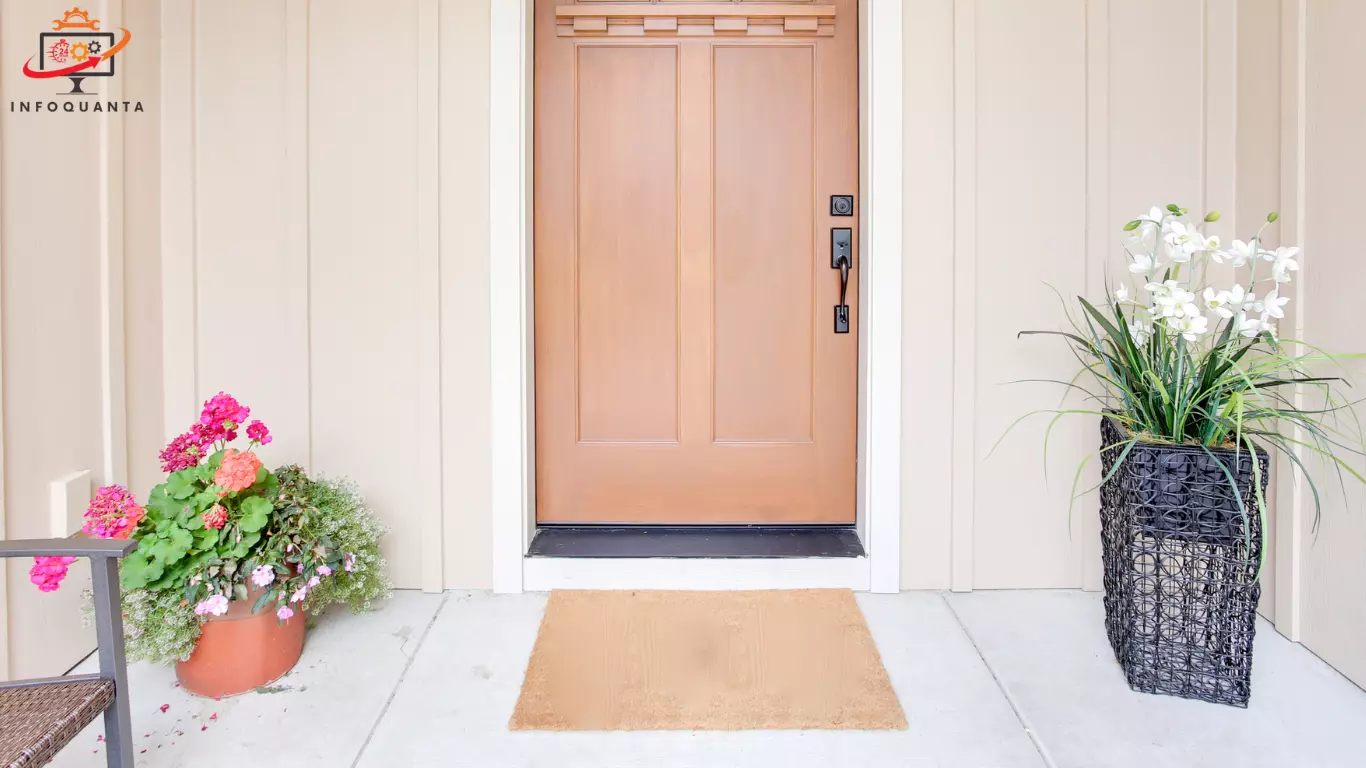When it comes to making a lasting first impression, your doormat plays a pivotal role. Beyond being a mere accessory, a well-chosen outdoor doormat can effectively welcome guests, fend off dirt and debris, and withstand the harsh elements of the great outdoors. But with a multitude of materials available, how do you select the best one? In this comprehensive guide, we’ll delve into the world of outdoor doormats, exploring the finest materials, their features, maintenance methods, and more.
Exploring the Best Outdoor Doormat Materials
1. Coir (Coco Coir)
Coir, derived from coconut husks, is a popular choice for outdoor doormats. Its natural fibers are incredibly durable and capable of withstanding heavy foot traffic. Coir mats effectively scrape off dirt and mud from shoes, preventing them from being tracked indoors. They are moisture-resistant and offer an eco-friendly option for your doorstep.
Features:
- Excellent dirt and debris removal due to coarse texture.
- Resilient against wear and tear.
- Natural look and feel.
- Biodegradable and environmentally friendly.
Maintenance:
- Regularly shake or brush the mat to remove dirt and debris.
- Avoid prolonged exposure to moisture to prevent deterioration.
- Consider using a weatherproof spray to enhance its water resistance.
2. Rubber
Rubber doormats are prized for their durability and versatility. They come in various designs, from intricate patterns to simple textures, making them suitable for different aesthetics. Rubber mats are slip-resistant, making them a safe choice for wet environments.
Features:
- Slip-resistant surface, ideal for rainy or snowy conditions.
- Durable and resistant to cracking.
- Available in a wide range of designs.
- Easy to clean and maintain.
Maintenance:
- Regularly sweep or hose off the mat to remove dirt and grime.
- Apply a mild soap solution and scrub with a brush for deeper cleaning.
- Avoid using harsh chemicals that could damage the rubber.
3. Synthetic Fibers (Polypropylene)
Synthetic fiber doormats, often made from polypropylene, are designed to mimic natural materials like coir while offering added benefits. They are lightweight, easy to clean, and highly resistant to fading and moisture.
Features:
- Resemble natural materials but with enhanced durability.
- Fade-resistant and moisture-resistant.
- Lightweight and easy to handle.
- Versatile designs and colors.
Maintenance:
- Regularly sweep or shake off dirt and debris.
- Hose down the mat and scrub with a brush to remove stubborn stains.
- Allow the mat to dry completely before placing it back in use.
Choosing the Best Outdoor Doormat
Selecting the best outdoor doormat involves considering your specific needs and the mat’s intended location. Here are some factors to keep in mind:
- Foot Traffic: If your doorstep receives heavy foot traffic, opt for a more durable material like coir or rubber to ensure the mat’s longevity.
- Weather Conditions: Consider the local climate. Rubber mats are excellent for wet environments, while synthetic fibers are better at resisting fading due to sunlight exposure.
- Aesthetic Appeal: Choose a design that complements your home’s exterior. Outdoor doormats come in various colors and patterns, so you’re sure to find one that suits your style.
- Maintenance: Be realistic about the level of maintenance you’re willing to commit to. Some materials, like rubber, are easier to clean and maintain than others.
FAQs About Outdoor Doormats
Q1: Can I use an indoor doormat outdoors?
Indoor doormats are generally not designed to withstand outdoor conditions. Outdoor doormats are made with materials that are more resistant to moisture, UV rays, and wear from outdoor use.
Q2: How often should I clean my outdoor doormat?
Regular cleaning depends on the foot traffic and weather conditions. In general, aim to clean your outdoor doormat at least once a week by shaking off debris and giving it a quick sweep. Deeper cleaning can be done monthly or as needed.
Q3: Can I put my outdoor doormat directly under the sun?
While many outdoor doormat materials are designed to withstand sunlight, prolonged exposure to intense sunlight can cause fading and deterioration over time. It’s best to place your mat in a covered or shaded area if possible.
Q4: Are outdoor doormats environmentally friendly?
Materials like coir are biodegradable and eco-friendly. Rubber and synthetic fiber mats are not as biodegradable but are often made from recycled materials, contributing to sustainability.
Conclusion
Selecting the best material for your outdoor doormat involves considering durability, aesthetics, and maintenance. Coir, rubber, and synthetic fibers each have their unique advantages, catering to various needs and preferences. By making an informed choice, you can welcome guests with style while keeping your home cleaner and more inviting. So, take your time, explore your options, and let your doormat be the perfect introduction to your abode.

